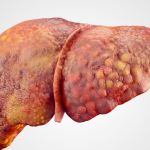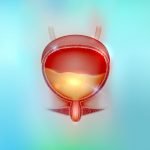Bright Disease
Natures Cure
Sussanna Czeranko, ND, BBE
In all chronic diseases, the most important thing is not to lose patience, and not to entertain the idea that one can effect a cure in six weeks, of a disease that has taken years to develop.
-A. Baumgarten, 1903, p. 280The skin in all these cases must be forced to perform a compensatory function. Its activity should be stimulated. In this way the excretion of toxic material is facilitated and occurrence of grave systemic complications prevented.
-Benedict Lust, 1938, p. 81The first condition of a cure [is] to put the patient on a most natural diet, and to assist the kidneys in their functions by three half baths daily, of about 95°F, with following cool short douches on the body, the back and the legs, and mornings and evenings cold wet packings.
-Benedict Lust, 1909, p. 22
Bright disease was a common ailment found in the 19th century and early 20th century and was the fourth-leading cause of death in the United States in 1912 (CDC/NCHS, 1998). Named after its English physician discoverer, Bright disease is now referred to as acute or chronic nephritis. Today, nephritis ranks as the eighth-leading cause of death (CDC/NCHS, 1998). It seems that we are still not out of the woods yet, and perhaps we can benefit from learning more about the experiences of our elders in treating this disease and achieving healthy functioning kidneys for their patients.
Bright disease was well known to the early NDs. They observed people from all walks of life afflicted by this horrible and painful malady. Discussion among early NDs was frequent and widespread. Bilz, for example, described some of the causes for acute Bright disease and included in his taxonomy “catching cold, dissolute mode of life…infectious diseases, typhus, small-pox, tuberculosis, ague [fever associated with malaria], scarlatina and pregnancy” (1900, p. 80). Lust noted that chronic forms of Bright disease were more common among men, reasoning that “for one thing, they are more addicted to alcoholic drinks” (1906, p. 162).
Baumgarten wrote early in the last century that in the case of “inflammation of the kidneys…the first sign is usually fever” (1903, p. 279). Besides fever, though, Lust added the following symptoms of Bright disease:
[C]hills, sensation of pains and tension and compression near the kidneys, dropsical swelling of the skin in various parts of the body [legs, sexual organs, lower eyelids], less frequent urinating and dark, brown-red, turbid bloody urine with a flaky sediment. (1906, p. 162)
Earlier, Bilz had described Bright disease as manifesting “vomiting…pressure in the back, dropsical swelling of the face, abdomen, hands, testicles and nymphae [labia]; damp and clammy skin” (1900, p. 80). He added that Bright disease was often associated with “inflammation of the lungs, of the peritoneum and pericardium” (Bilz, 1900, p. 80), symptoms that, in his view, were a serious cause for alarm. In any case, the early NDs recognized that the disease could strike all ages and all walks of life. Lust acknowledged:
The acute form of nephritis is most frequent in childhood, although not necessarily confined to the young. It may be produced by cold and exposure and often is a sequel to the acute infection…and associated with pregnancy. (1938, p. 279)
In adults, however, Bright disease was predominantly a male disease. Causes of Bright disease were attributed to “unnatural and wrong nourishment…and bad habits in eating and drinking, the dangerous excess in quantity and the entirely imprudent selection in quality” (Lust, 1909, p. 22). One can read between the lines and interpret the imprudent eating and drinking as excess meat and alcohol. Morbid matter was a term that summed up these indiscretions of lifestyle, and its accumulation was the core problem as far as the NDs early in the last century were concerned.
Even then, laboratory evaluations of urine were included in naturopathic diagnosis: “The examination of the urine is of the greatest importance in order to determine accurately the stage that the disease has reached” (Baumgarten, 1903, p. 280). Lust weighed in: “Microscopic examination of the sediment of the urine shows red blood corpuscles and several kinds of cylindrical formation” (1906, p. 163). Diagnosis of Bright disease also included an ophthalmic examination. Vision disturbances such as field of vision and temporary blindness were common in nephritis and would trigger a urine examination for confirmation. Lust reported that NDs would examine the retina with an ophthalmoscope to confirm a diagnosis of “the disease at a time when all symptoms have not yet become apparent. On the retina…appear white stripes or spots. Sometimes an extravasation, small or large, is noticed on the retina” (1906, p. 163).
Treatment of Bright Disease
Treatment involved addressing the inflammatory process occurring in the kidneys, engaging the skin to compensate for the kidneys, and finally addressing the systemic symptoms. The superiority of hydrotherapy as a way to force the skin to perform a compensatory function was unrivaled at the time. The use of cold applications, which was central to the naturopathic integrated treatment plan, was not to be missed. Hydrotherapy was valued for alleviating inflammation and hyperemia in the kidneys. Lust applauded the cold wet pack:
The best local application for this purpose is without a doubt the cold moist pack (Priessnitz method). It is indicated particularly in the earlier stages of the disease and only in cases where the systemic symptoms are either absent or are of a very mild type. If the amount of albumen is large and symptoms of uremic poisoning are present (headache, vertigo, nausea, etc.), hot application are safer and more effective. (1938, p. 81)
Baumgarten, who worked with Kneipp at Bad Wörishofen, Germany, also endorsed the abdominal compress as “very beneficial for relieving congestion of the kidneys” (1903, p. 279). However, when the cold abdominal compress or pack was used in early stages of nephritis, it was unanimously agreed that “the danger of internal congestions following cold applications is a factor which must not be ignored in cases of chronic renal inflammation” (Lust, 1938, p. 81). Lust commented that because of “[T]he tendency towards venous congestions in all cases of chronic kidney trouble and the notoriously uncertain character of reaction, the hot, moist application is by far safer and more effective” (1938, p. 81). Hot packs acting as an anodyne would be applied to the small of the back often and changed frequently to alleviate pain. Lust adds a second prong to the treatment of inflammation by including massage to the kidney area. Massage and “deep vibration over the first three lumbar vertebrae given every other day for five or ten minutes” (Lust, 1938, p. 81) aided micturition.
Vegetarian Diet
Another aspect of treatment was diet, which was considered most important. The early NDs recognized that dietary modifications gave the kidneys the rest they needed. Reducing irritating foods helped to diminish the load on the kidneys. Lust stated, “We cannot suspend kidney function but we can modify it” (1938, p. 80). It was recognized that food “in” eventually equaled waste “out.” Lust summarized the importance of diet in the treatment of nephritis: “We are prepared to understand the enormous importance of putting the proper material into the body because, in its last sequences, food stimulates and irritates the function of the kidneys” (1938, p. 80). Like Lust, other NDs established clear dietary recommendations. The patient was advised “to adopt a strictly vegetarian diet. Meat, spicy dishes and alcoholic drinks are absolutely prohibited” (Lust, 1906, p. 162).
Thoughts on the consumption of water and fluids were also considered. Lust wrote, “Milk, sweet and sour [kefir], and especially almond milk are highly recommended as they are not irritating” (1906, p. 162). In fact, drinking copious amounts of water was discouraged: “It is not unequivocally true that patients with Bright’s disease can and should be allowed to drink unlimited quantities of water” (Lust, 1938, p. 80). He explained that in cases of Bright disease the plumbing was defective and a large fluid intake for the purpose of a diuretic was “physiologically an error and may prove disastrous clinically” or that helping to flush out waste products would only serve to “overstimulate [kidney] function, to tire the kidneys, and to increase the watery constituents of the body which are usually excessive in this disease” (Lust, 1938, p. 80). Instead, he recommended that “water should be allowed often but only in small doses” and that “stimulants like coffee, tea and alcohol in any form must be interdicted” (Lust, 1938, p. 79). Enemas were also part of the treatment protocol. Lust counseled, “To prevent constipation enemas of 80-90°F going down to 68° to 72°F should be used” (1906, p. 162).
Martin (1921) explained that “galvanic currents” were also incorporated into the treatment plans. He wrote, “Galvanization by means of a large negative plate electrode over the lumbar region [and] a positive sponge electrode at some distance might be advantageously employed every day or every other day for ten minutes” (Martin, 1921, p. 443). Violet rays or high-frequency currents were indicated for pains. Violet light is produced in a vacuum tube during the interaction of electrical current and gases contained in the tube. Martin, an expert on the use of the violet ray frequency, expounded on the benefits of violet rays: “By applying gentle electrical stimulation to nerve or muscle tissues, they are exercised to the end of producing accelerated circulation in the body with consequent greater nourishment for rebuilding tissue, such is the effect of Violet Ray treatment” (1921, p. 445). A partial list of the effects of the violet ray mentioned by Martin included the ability to “increase blood [circulation]…increase oxygenation of the blood…[and] increase elimination of waste products” (1921, p. 448).
Skin and Its Compensatory Function
Much was written back then by the NDs about the various causes and different manifestations of nephritis, but treatment essentially followed the same principles. Acute nephritis and chronic nephritis were treated similarly using several therapeutic interventions combined in an integrative treatment plan. The initial clinical treatment objective of nephritis, whether acute or chronic, was instilling rest for the patient and rest for the afflicted organ, the kidneys. With nephritis, the diseased kidneys were unable to remove the buildup of waste products from the body or to give rest to the kidneys:
[R]est to the kidneys is distinctly a physiological problem.…We are dealing with a chronic inflammatory process in the kidneys. Rest, therefore, is the means of restoring and re-establishing…the proper relation of arterial and venous blood pressure in the [kidneys]. (Lust, 1938, p. 80)
Lust explained that establishing homeostasis in renal circulation recognized the interconnectedness of the human body. It was understood that the kidneys needed rest and that “they are not the only organs in the body that are taking care of the process of elimination and excretion” (Lust, 1938, p. 80). Furthermore, “[t]herapy is largely based on the reciprocal relationship between the kidneys and the skin” (Lust, 1938, p. 79). Stimulating the skin function compensated for the underactivity of the kidneys in their role as emunctory organs. Lust elaborated:
It is an old and well understood physiological law that nature helps a disabled organ by compensation, i.e. by entrusting a compensatory function to another organ. To get rid of surplus watery constituents in the body and to excrete waste, we have learned to apply the principle of clinical compensation by entrusting the skin with the work which the kidneys are unable to do. (1938, pp. 80-81)
Lust reminded us that “over one half of the entire excretory work of the kidneys can be assumed by the skin” (1938, p. 79).
To facilitate elimination through the skin, several strategies were used. For the treatment of “children, the hot full bath…up to 100°F and even higher…to encourage diaphoresis” (Lust, 1938, p. 80) was recommended. The patient’s comfort was paramount, so the room temperature was such that no chilling was permissible. The early NDs contended that “cold air contract[s] the superficial vessels and lessens the activity of the skin. Warm air keeps the skin active” (Lust, 1938, p. 81); thus, dry heat chambers were used to aid the skin’s elimination of waste products. The dry heat chamber, with which we are familiar today as the radiant heat sauna, was thought to be superior to the hot full bath. Temperatures used in the heat chamber ranged remarkably “up to 250°F and [were] kept up for half an hour or even an hour” (Lust, 1938, p. 80). Lust extolled the virtues of the dry heat treatment, declaring: “There is no single therapeutic agent that can be approximately compared to the dry-heat cylinder or the electric light bath in cases of chronic Bright’s disease” (1938, p. 81). His recommendation was as follows: “If the heart has not given rise to symptoms on the part of [edema], two or three mild sweat baths in the dry heat or electric light cylinder have the proper diaphoretic and excretory effect” (Lust, 1938, p. 81). He added, “The bath should not be carried beyond the point of tolerance” (Lust, 1938, p. 81). If a hot chamber was unavailable, a full-body hot pack was used instead.
The early NDs insisted that warm temperatures were vital to the stimulation of the skin. Chilling was avoided at all costs: “The object of all treatment is and must be to draw the blood to the skin and avoid congestions of internal organs” (Lust, 1938, p. 80). The full-body treatments “[the full bath, hot air chamber, full body fomentation] were given every day or even oftener” (Lust, 1938, p. 80), and the local hot fomentations to the kidney area on the back were also considered necessary.
Symptomatic Treatment
Acute uremia, the early literature documents, manifested symptoms such as “headache, vertigo, nausea, defective vision, vomiting, and asthma [and] required active eliminative treatment” (Lust, 1938, p. 82). The implementation of hot applications, vibration along the lumbar region, and galvanic current were applied, including “hot baths, dry heat baths, [and] electric light baths” (Lust, 1938, p. 84) for the purpose of inducing diaphoresis. Lust advised that during acute attacks of uremia colon flushing or enemas using “hot water…in large quantities” (1938, p. 82)
should be utilized. He cautioned that “irritability of the bladder can be allayed by applications of heat to the supra-pubic region and irrigation of the bladder with hot water. Hot rectal injections frequently give prompt relief” (Lust, 1938, p. 82). He noted, “The beginning of recovery is marked by increased secretion of the urine and gradual lessening of the swelling” (Lust, 1906, p. 162).
An example of a treatment plan reflecting all these considerations used by Bilz went as follows:
Steam bath in bed daily, three hot water bottles with extra (4-6 fold) compresses on [the] back in the region of the kidneys, the same on the heart until profuse perspiration ensues (duration about 2 hours), then 88-90°F lukewarm bath, with 81-84°F affusions [water poured onto the patient from a pitcher], accompanied by vigorous friction of the skin; 77°F stimulating compresses in the region of the kidneys (from ½ to 1 hour) and two to three hours [of] calf packs. (1900, pp. 80-81)
As part of his treatment suggestions, Bilz endorsed the use of stimulating packs. These included applications to the calves, kidneys, and pelvis every night.
Herbal Teas
Winternitz prescribed birch leaf tea for nephritis. He suggested the following recipe:
For preparing one cup, take about 25-30 grams of [dried] leaves, pour 150 to 200 grams of boiling water over them, let it boil for a few moments and keep it 1 to 2 hours to steep in the infusion. Then strain the tea which is now ready for use. One can also prepare the whole daily portion [2 to 3 cups] at once and drink the strained tea at various times between meals cold or lukewarm. (Winternitz, 1905, p. 7)
Lust recommended herbal formulas too. He wrote: “If the urine is scanty drink twice a day a cup of shavegrass [Equisetum] tea with juniper berries” (1921, p. 114).
Compelled to Keep Tradition
Although Bright disease seems to belong to days past, the wisdom of the naturopathic elders in recognizing the relationship between the kidneys and the skin in their treatment strategies is worth the reminder. Their integrative naturopathic protocols are indeed appropriate for the enduring prevalence of nephritis, which ranks as the eighth-leading cause of mortality today. The traditional naturopathic treatments, although out of fashion, are as compelling today as a century ago.
Sussanna Czeranko, ND, BBE is the curator of the rare book collection at National College of Natural Medicine, in Portland, Oregon. She is currently compiling an 8-volume series on nature cure topics for the profession. She is also an adjunct faculty member of the Transformative Voice Institute in Portland, the founder of the Breathing Academy in Portland, and a founding board member of the Buteyko Breathing Educators Association. She is a licensed ND in Ontario, Canada, and in Oregon and is a graduate of Canadian College of Naturopathic Medicine, Toronto, Ontario. She has been in practice since 1994, incorporating nature cure modalities and tools into her practice with great success. Her Web site is www.breathingacademy.com.
References
Baumgarten, A. (1903). Kidney diseases. The Naturopath and Herald of Health, 4(10), 278-282.
Bilz, F. E. (1900). Bright’s disease. The Kneipp Water-Cure Monthly, 1(5), 80-81.
Centers for Disease Control and Prevention/National Center for Heath Statistics (CDC/NCHS). (1998). Leading causes of death, 1900-1998. Retrieved September 21, 2012, from http://www.cdc.gov/nchs/data/dvs/lead1900_98.pdf
Lust, B. (1906). Bright’s renal disease. The Naturopath and Herald of Health, 7(4), 162-163.
Lust, B. (1909). Kidney diseases. The Naturopath and Herald of Health, 14(1), 22-23.
Lust, B. (1921). Diseases of the kidneys. Herald of Health and Naturopath, 26(3), 113-114.
Lust, B. (1938). Post-graduate study of naturopathy: Bright’s disease. Naturopath and Herald of Health, 4(10), 79-84.
Martin, E. A. (1921). Violet rays: Or properly called high frequency. Herald of Health and Naturopath, 26(9), 442-449.
Winternitz, L. (1905). Birch leaf tea: An excellent remedy for kidney diseases. The Naturopath and Herald of Health, 6(1), 7.










